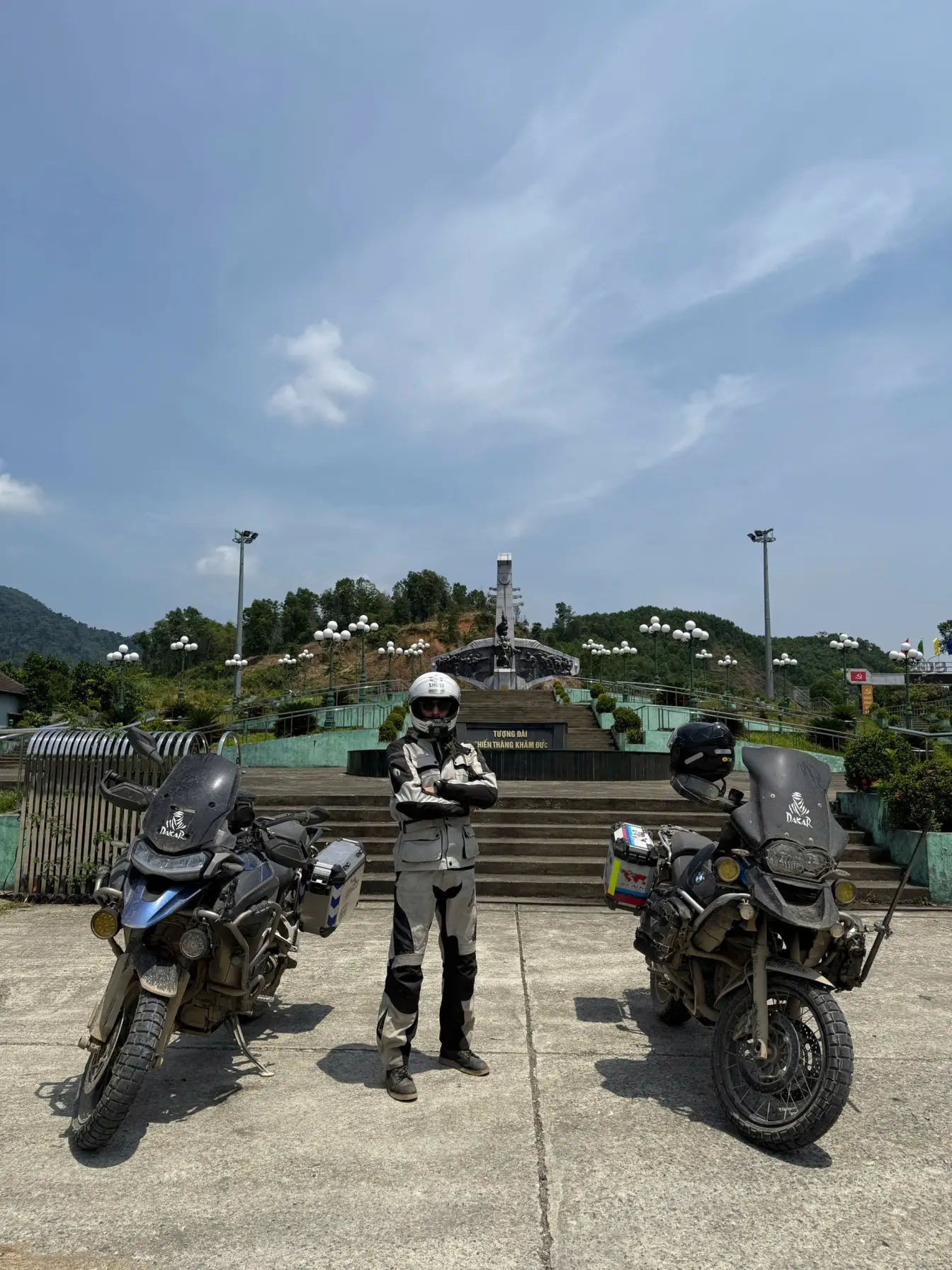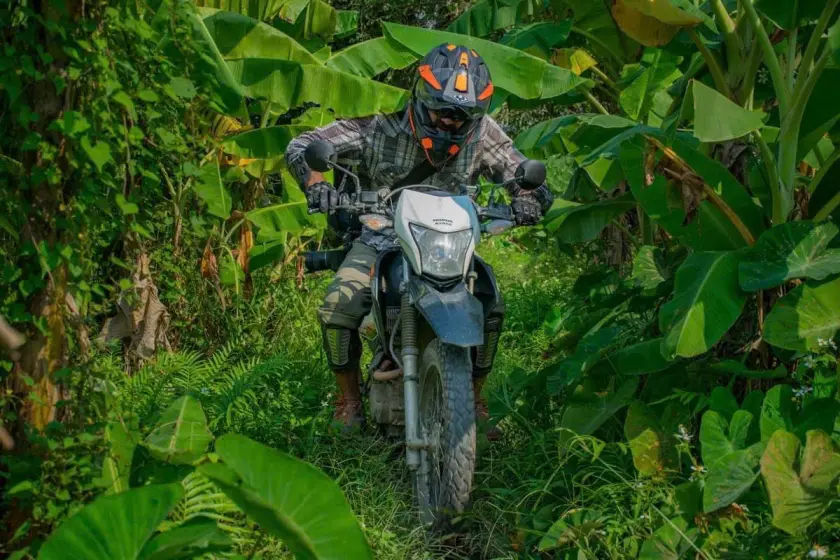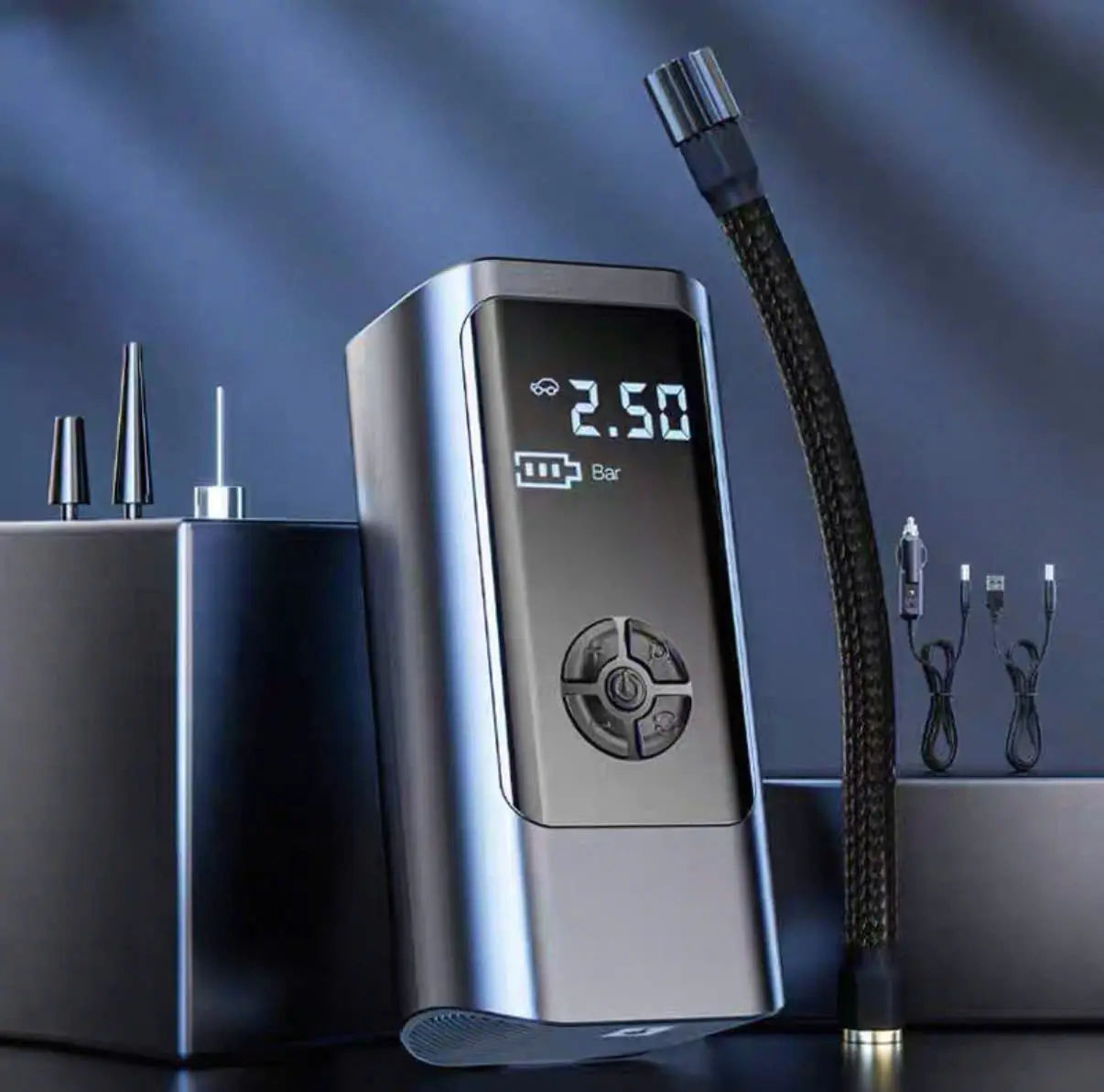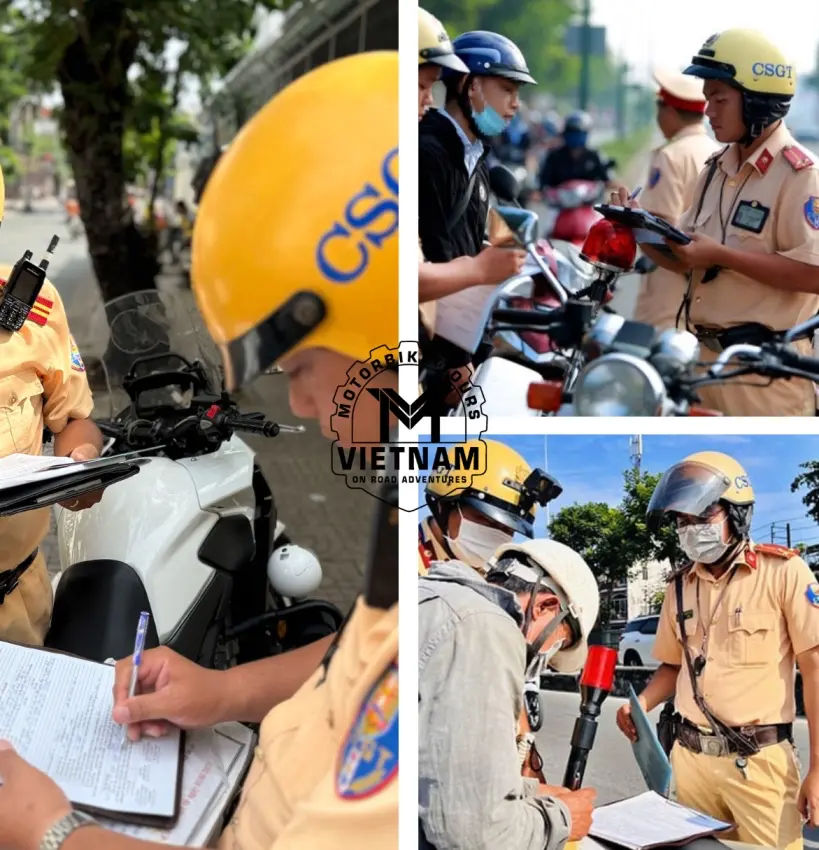
This post is about DIY motorcycle checks and repairs, as we know, even the most well-prepared motorcyclists can face the occasional roadside hiccup. Before setting off, make sure your bike is in top shape check your tires, lights, and fluid levels, and carry a few essentials like a toolkit and tire repair kit. Understanding the basics of motorcycle maintenance can save you time and trouble, especially in remote areas like in Ho Chi Minh Road in Vietnam. Above all, stay mindful of local and national legal requirements for safety gear, lighting, and vehicle condition, because being prepared isn’t just practical, it’s part of responsible travel.
- Check out Motorbike tours in Vietnam
Technical Tips for Motorcycle Repairs on the Road: Introduction
Anyone who’s spent enough time riding through Vietnam, or anywhere else in the world, knows that even the smoothest trips can throw you a few surprises. A loose chain, a slow puncture, or a flickering headlight can happen when you’re miles from the nearest town.
Knowing a bit about your motorcycle, how to tighten a bolt, check the oil, or patch a tire can make all the difference between a short stop and a ruined day. I learned this the hard way somewhere between Ha Giang and Cao Bang back in early 2009, where a quick roadside fix with a multitool saved me hours of waiting for help.
Vietnam’s long, winding roads are beautiful but tough on machines, specially on off-road motorbike tours, so it pays to stay prepared. Even simple habits like checking tire pressure, oil levels, and brake fluid before a ride can help you avoid most breakdowns. Think of it as part of the adventure, a skill that keeps both you and your bike rolling safely toward the next destination.
- Learn more about Most scenic routes in Northern Vietnam
- Check out Ha Giang Loop motorbike ride
Understanding Your Motorcycle’s Key Components
There is a difference (huge one) between an XR150 and a Triumph tiger 1200 or GS of BMW, so if you know a little about your XR and or Tenere 700, it doesn’t necessarily means you can fix the other machines. When you’re far from the city and your bike starts acting up, it helps to truly know the machine beneath you.
Understanding your motorcycle’s main components isn’t just for mechanics, it’s for riders who want to stay confident on the road. I remember riding along the Indochina tours back in 2016, where the sound of my engine became as familiar as a heartbeat.
Knowing what that sound meant, when it was healthy, and when it wasn’t, made all the difference. The more you learn about your bike’s parts, the less intimidating roadside problems become. It’s like learning a new language, one that every long-distance rider eventually speaks.
- Check out Essential gears for long motorbike rides
Engine Basics and Common Issues
The engine is everything, it’s the heart of your motorcycle, treat it well, and it will carry you across mountains and coastlines without complaint. I’ve had my share of scares: once, in the middle of central Vietnam, the bike started sputtering from bad fuel I’d bought at a roadside stand.
A quick drain of the carburetor on my 2006 Kawasaki W650 and fresh gas got me moving again. Knowing how to check oil levels, spot leaks, or clean an air filter can save your trip.
Most engine issues start small, a strange noise, a drop in power and knowing how to read those signs keeps you ahead of trouble. It’s not about being a mechanic; it’s about understanding your travel companion.
Chain, Brakes, and Clutch Maintenance
Your chain, brakes, and clutch are the unsung heroes of every ride, the parts that quietly keep you safe and moving. I learned to check my chain tension every morning after a long day on Vietnam’s dusty backroads; a loose chain once slipped off mid-ride, teaching me that five minutes of maintenance can save hours of frustration.
Keeping your brakes clean and responsive matters even more when descending from misty mountain passes or weaving through city traffic. And the clutch that delicate balance of feel and control can wear out faster than you think on long journeys. Carry a bit of chain lube, inspect regularly, and never ignore small changes in how your bike feels; it’s often your first warning sign.
Electrical Systems and Battery Care
Electrical problems have a way of showing up at the worst times, like when you’re setting up camp and realize your headlight won’t turn on. I’ve had that moment more than once, and it taught me to carefully care about the simple power of good battery life.
Check your terminals for corrosion, make sure your connections are snug, and always carry spare fuses. Vietnam’s humidity and rough terrain can be tough on electrics, so regular checks go a long way. Once, I jump-started my bike using a portable battery pack after a week of wet weather rides a small tool that earned a permanent spot in my kit. Treat your electrical system as you would your map or GPS without it, you’re riding in the dark, literally and figuratively.
Quick Fixes You Can Do on the Road
Every rider eventually faces that moment when the road stretches endlessly ahead and something goes wrong. Maybe it’s a flat tire in the middle of nowhere, or a clutch lever that feels looser than it should.
Out there, your ability to handle small repairs becomes your lifeline. I’ve spent quiet hours on the roadside in northern Vietnam, surrounded by rice paddies, patching up a tube or tightening a bolt while locals watched with quiet curiosity. It’s part of the rhythm of motorcycle travel solving problems with your hands, patience, and a few trusted tools.
Remember, learn the easy fixed, these aren’t just about keeping your bike running; they build your confidence mile by mile.
Repairing a Flat Tire Without a Workshop
There’s nothing quite like the sinking feeling of realizing your tire’s gone soft halfway between towns. It happened to me once on a dusty road outside Phong Nha, with no workshop in sight. Luckily, I had a tire repair kit and a small pump my saving grace.
Patching a puncture isn’t glamorous work, but it’s one of the most useful skills you can learn. Find the leak, roughen the spot, apply the patch, and reinflate simple, steady steps that turn frustration into satisfaction. In Vietnam, where distances between towns can be long and roads unpredictable, knowing how to fix a flat can mean the difference between a short delay and a long walk.
Adjusting Loose Chains and Brake Levers
A loose chain or wobbly brake lever can sneak up on you after days of rough riding. I remember stopping by a roadside café near the Yok Don National Park, tightening my chain with a borrowed wrench while sipping strong Vietnamese coffee. Small adjustments like these keep your ride smooth and safe and they’re easier than most think. A chain that’s too loose can skip or snap; one that’s too tight wears out quickly.
The same goes for brake levers they should feel responsive, not spongy or stiff. Take five minutes each morning to check these parts, and you’ll prevent half the issues that plague long-distance riders. Sometimes, maintenance is just a quiet ritual that keeps your journey flowing.
Restarting a Dead Battery Safely
A dead battery always seems to strike when you least expect it, for me, it was early morning in Da Lat, the air misty and cold, the bike completely silent. I’d left the lights on overnight. Thankfully, I carried a compact jump starter, and within minutes, the engine purred back to life. Knowing how to safely restart a dead battery whether by jump-starting or push-starting is an essential skill for any long-distance rider.
Check your connections, avoid short circuits, and make sure your battery terminals stay clean and dry. Modern bikes are more reliable than ever, but even the best can fail after a week of rain and rough terrain. A little preparation keeps you from being stranded when the world is still asleep and you’re miles from help.
Essential Tools and Repair Kits for Riders
Every long-distance motorcyclist learns that the right tools can turn a potential disaster into a quick pit stop. I’ve carried the same small toolkit across countless rides through our Indochina motorbike travel it’s scratched, dusty, and worth its weight in gold.
When you’re far from a workshop, your repair kit becomes your best friend. Whether it’s tightening a mirror, fixing a chain, or pumping a flat tire under a roadside tree, having the right gear makes the difference between confidence and chaos. Over time, you start to build your own perfect set, shaped by experience and the roads you’ve ridden.
Compact Toolkit Checklist
A good toolkit doesn’t have to be heavy just smartly packed. Mine fits neatly under the seat, or on top of my side box but it’s saved me countless times. A few Allen keys, open-ended wrenches, screwdrivers, pliers, and a small adjustable wrench form the core.
Add a couple of spare bolts, some electrical tape, and zip ties, and you’re ready for most on-the-road surprises. I once tightened a loose footpeg using nothing more than a multi-tool and a bit of luck proof that even minimal gear can go a long way. When packing, think of your bike’s quirks: metric or SAE, the tools needed to remove the wheels, or reach your spark plugs. A compact toolkit is like a travel partner who never complains but always shows up when you need help.
Emergency Tire and Chain Repair Gear
A puncture or chain issue can stop a great ride in its tracks, and it usually happens far from any mechanic. I learned that lesson outside Thakhek loop in Laos, where a sharp stone punctured my rear tire halfway up a hill.
My tire plug kit and mini air compressor saved the day a 20-minute fix and I was back on the road. Alongside tire tools, carry a small bottle of chain lube and a few master links. A dry, squeaky chain on a long Vietnamese ride can turn into a snapped one if ignored. With a little care and the right gear, even rough, remote routes become manageable. It’s these moments that make you appreciate preparation more than horsepower.
- You may check Laos motorcycle tours
Using Multi-Tools and Portable Air Pumps
When space is tight and it always is on a motorbike multi-tools and compact air pumps become essential. My first multi-tool was a cheap one I bought in Hanoi, and it’s still in my tank bag today.
From tightening mirrors to cutting tape, it’s handled more emergencies than I can count. A portable air pump is another must-have; I’ve used mine not just for flats, but to adjust tire pressure before hitting muddy mountain trails or long highway stretches. Both tools are small, simple, and endlessly useful. The longer you ride, the more you realize that being self-sufficient isn’t about carrying everything it’s about carrying what really matters.
Preventive Maintenance Before Hitting the Road
Before every long ride, or every ride with a bigger group, I take a quiet moment with my bike, just me, a cup of coffee, and a checklist. Preventive maintenance isn’t glamorous, but it’s what keeps adventures smooth and safe. I learned this after a clutch cable snapped halfway through the Battambang last tear in Cambodia, turning a scenic ride into a sweaty roadside fix. Since then, I’ve treated pre-ride checks like a ritual.
A few minutes of attention before you roll out can save you hours of trouble later. Whether you’re crossing provinces or countries, knowing your motorcycle is road-ready gives you peace of mind that no map can offer.
- Check out Cambodia motorbike travel
Pre-Ride Inspection Routine
Every morning before a long ride, I walk around my bike and look it over to have a general view. It takes less than five minutes, check the tires, lights, brakes, and chain tension, then look for leaks or anything that feels off.
I’ve caught loose bolts and worn cables this way, long before they became real problems. On one trip through Vietnam, I spotted a nail in my tire during my morning check, and that quick glance saved me a flat halfway up a mountain road. Think of it as a conversation with your bike it always tells you when something’s not quite right, if you take the time to listen.
Fluid Checks and Lubrication Schedule
Oil, coolant, and brake fluid are the lifeblood of your machine, and checking them regularly keeps your bike happy. I make it a habit to check oil before every multi-day trip, it’s a simple act that’s saved me from engine trouble more than once.
Once, during a ride from Hanoi to Da Lat, I noticed the oil had darkened and thinned after days of heat and long hours I changed it right away and avoided what could’ve been serious damage. Lubricate your chain every 500 km or so, and especially after rain or dusty rides. It might feel routine, but these small steps extend your bike’s life and your confidence on the road.
How to Spot Early Signs of Mechanical Problems
Bikes have a way of whispering before they shout a strange vibration, a new rattle, a change in how the clutch feels. Learning to spot those early signs can make the difference between a quick fix and a long walk. I remember riding near Pleiky when I felt a subtle pull to one side; a quick stop revealed a slowly deflating tire.
Catching it early meant I could patch it instead of replacing the tube. The same goes for noises a knocking sound, a stiff lever, or fading brakes are all clues. Pay attention to how your bike feels when it’s running right, so you can sense the difference when it’s not. Experience turns awareness into instinct, and that instinct keeps you riding safely toward the next horizon.
Safety and Legal Considerations for On-Road Repairs
Stopping on the side of the road to fix your bike can be nerve-wracking, especially when traffic roars past and you’re far from home. Over the years, I’ve learned that safety and awareness matter just as much as mechanical skill.
Whether it’s pulling over on a busy highway or tinkering with your bike in a quiet mountain pass, how you handle yourself makes all the difference. Vietnam’s roads can be unpredictable — from chaotic city streets to narrow country lanes so knowing when and where to stop, and what local laws expect of you, keeps both you and your motorcycle out of harm’s way.
Ensuring Safety While Stopping on Highways
I’ll never forget the time I had to pull over on Highway 1 during a ride from Hue to Da Nang, trucks thundering past, wind shaking the bike as I tried to fix a loose mirror. It taught me the importance of choosing your spot wisely. Always move as far off the road as possible, use hazard lights or a reflective vest, and keep your helmet on if traffic is close.
Set up a visible marker if you can even a bright cloth helps passing drivers see you sooner. Sometimes, it’s better to push the bike to a safer shoulder or rest stop than to risk a quick fix in a dangerous spot. The rule is simple: fix your bike, but protect yourself first.
Local Laws and Regulations for Roadside Repairs in Vietnam
Vietnam’s road culture has its own rhythm, lively, fast, and sometimes unpredictable.
While small roadside fixes are common and often overlooked in rural areas, highways and urban roads have stricter rules. Technically, stopping on major roads should only be for emergencies, and you’re expected to move your bike off the main lane if possible.
I’ve been waved along by police near Hanoi before, reminded to park completely off the tarmac. It’s always good to know the basics: carry your license, registration, and insurance, and make sure your lights and mirrors meet legal standards. Locals are usually quick to lend a hand, but staying within the rules keeps things smoother and safer for everyone.
- It’s good to know how to get an IDP to ride in Vietnam legally
When to Call for Professional Assistance
There’s a fine line between being resourceful and pushing your luck. I learned that lesson deep in the Mekong Delta when my clutch cable snapped in the heat of the afternoon.
I tried a makeshift fix, but within minutes, I realized it wasn’t worth the risk. A quick call to a nearby mechanic who showed up on a scooter with tools in hand saved the day. Sometimes, knowing when to stop is the most important skill a rider can have.
If the repair feels unsafe, too complex, or beyond your comfort zone, get help. In Vietnam, local mechanics are never far away, and they’ve seen it all. It’s better to arrive late than not at all the road will always be there when you’re ready to ride again.
Educational Resources for Motorcycle Maintenance
One of the best things about long-distance riding is that every trip teaches you something new, whether riding wide, or technical wise, not only about the road, but about your motorcycle.
I started out knowing only how to check tire pressure since I kept seeing tyre pressure alarm on my dashboard, but after years of traveling across Vietnam, I’ve learned to adjust valves, fix electrical hiccups, and even replace clutch cables on the roadside.
Today, there’s no shortage of ways to learn: online tutorials, rider workshops, and friendly local mechanics all willing to share a few tricks. Gaining these skills doesn’t just make your rides smoother; it deepens your connection to the machine that carries you across every mountain and market road.
Online Tutorials and Rider Workshops in Vietnam
Before my first long solo ride, I spent countless nights watching YouTube videos on motorcycle maintenance, everything from oil changes to brake bleeding.
Those tutorials gave me confidence, but it was a small workshop in Hanoi that truly brought it to life.
The instructor, a calm older mechanic, walked us through real bikes and real problems, showing that a little patience goes a long way. Across Vietnam, especially in cities like Ho Chi Minh City and Da Nang, local motorbike clubs often host maintenance sessions or group rides where beginners can learn hands-on. These spaces are gold for riders who want to combine community, travel, and technical know-how the perfect blend of learning and adventure.
Learning Basic Mechanics Before Long Trips
It’s easy to underestimate how valuable basic mechanical knowledge can be until you find yourself alone on a winding mountain road with a sputtering engine.
Before my ride through northern Vietnam, I spent a weekend at a small garage, learning how to change oil, tighten chains, and clean carburetors.
Those simple lessons paid off a dozen times over. Understanding your bike’s basic systems means fewer breakdowns, less panic, and more time enjoying the journey. Even if you never plan to do full repairs yourself, knowing what’s wrong helps you communicate better with local mechanics and often saves you money, too. It’s not just about fixing a machine; it’s about knowing the rhythm of your ride.
Certification and Legal Requirements for Self-Repair
In most parts of Vietnam, riders can perform their own minor maintenance without any issue, but it’s always smart to understand the legal landscape. For small roadside fixes or home servicing, you don’t need certification though for commercial repairs or workshops, proper licensing is required.
I once met a rider from Saigon who took a short vocational course just for fun, and it completely changed the way he approached his bike. Courses like that aren’t just about legality; they’re about confidence. Whether it’s learning to inspect a brake system properly or understanding what parts are safe to modify, getting even informal training gives you a deeper respect for both your bike and the laws that keep riders safe on the road.
FAQs: Motorcycle Repairs and Maintenance on the Road
What are the most common motorcycle problems on long trips?
Flat tires, loose chains, dead batteries, and electrical faults are the most common issues on long rides. Regular checks before and during the trip help prevent most of them.
Which tools are essential for quick roadside repairs?
A compact toolkit with wrenches, screwdrivers, pliers, a tire repair kit, mini air pump, and multi-tool are must-haves. Add zip ties, duct tape, and spare fuses for emergencies.
Is it legal to repair your bike on the roadside in Vietnam?
Yes, but only for emergencies. You must pull completely off the road and avoid blocking traffic, especially on highways. For major issues, it’s best to call for help or move to a safe area.
How can beginners learn basic motorcycle maintenance?
Start with your owner’s manual, watch trusted online tutorials, or join local rider workshops in Vietnam. Hands-on learning with a mechanic or experienced rider helps build confidence.
When should I call a mechanic instead of fixing it myself?
Call a mechanic if the issue involves the engine, electrical system, or brakes, or if you feel unsure about the repair. Safety comes first, it’s better to get help than risk a bigger problem.
Conclusion: Emergency Repair Skills Every Motorcycle Tour Rider Needs to know
Stay Safe and Prepared: Technical Skills Every Rider Should Master Before the Next Adventure
Every motorcycle journey is part adventure, part lesson and the more you know about your bike, the smoother that journey becomes. From fixing a flat tire on a quiet backroad to checking your fluids before sunrise, these small acts of preparation build both skill and confidence.
In Vietnam, where the roads can shift from city chaos to mountain calm within an hour, being ready for the unexpected is essential. Mastering basic technical skills doesn’t just keep your bike running; it keeps your spirit steady when the road throws surprises your way. So before your next ride, take a little time to learn, inspect, and prepare because true freedom on two wheels begins with knowing how to keep them turning.
About the author
Hamid is an experienced adventure rider and motorcycle tour organizer based in Vietnam. With years spent exploring the country’s most remote routes, he’s learned the art of on-road repairs through real-world experience from patching tires in the mountains to fine-tuning bikes in roadside cafés. His hands-on knowledge and passion for safe, independent travel make him a trusted voice for riders looking to explore Vietnam on two wheels.












